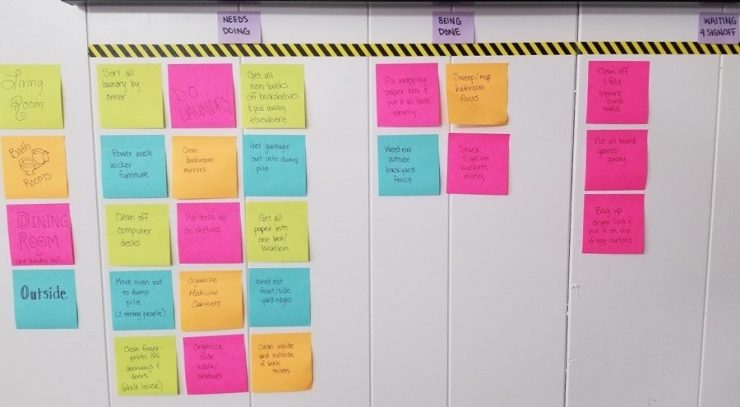In software development, when working on projects involving several moving parts and rapidly changing requirements, Scrum is the most widely used Agile process. Needless to say, it is also the best suited for such a situation.
This methodology is considered a mindset and encourages every team to use this methodology as a framework and guide, not as a definitive rulebook. While this may be a good approach, it also means that the definition of what a user story and what an epic is can change, leading to misunderstandings between developer and client.
Here, we break down what an epic and user story is, how they fit into the agile methodology, and the differences.
The Scrum Guide and Basic Structure
Epics and User Stories are commonly used in the Agile approach to software development. Scrum is a project management methodology within the Agile method that is the most widely used and accepted. The Scrum Guide was written to facilitate greater adaptability and not to function as a set of rules with constraints. The advantage of scrum methodology is that it is flexible and it is ideally used in projects in which the requirements are rapidly changing.
In today’s world, where things are constantly evolving and changing product development often struggles to keep up. Scrum helps in delivering products with the speed and efficiency needed while maintaining the value of the product.
In the Scrum hierarchy, a product owner derives a product backlog, the development team works on it in sprints. Sprints are a short, set time span within which a preset goal is to be accomplished and last anywhere between 1-4 weeks. So where do epics and user stories fit in this?
What is an Epic?
Epics are the foundation of an Agile program. It is a big chunk of work that can be divided into smaller user stories based on the needs of the customers or end-users. Epics help in organizing your tasks and creating a hierarchy. The idea is to break down your project into smaller tasks so that large projects can get in an incremental fashion while continuing to work towards a bigger goal.
In the scrum hierarchy, an epic can be seen as a collection of user stories that all function towards a larger goal. Each user story can have its own individual goal. An epic cannot be delivered in one sprint and often takes a series of sprints.
Epic Example
Epics are the accumulation of user stories, aren’t they? So let’s look at epics examples for real-life products.
- Uber
- As a user, I want a quick ride home.
- As a driver, I want to be able to ride request details.
- Spotify
- As a listener, I want to have the best listening experience.
- As an artist, I need to have a connect with my listeners.
What is a User Story?
A user story is a narrative form description of a product feature. User stories describe individual features of a product or service and not the entire project. A user story describes a task and provides guidelines on what needs to be accomplished. It is not a set of instructions.
There is no standardized format for the user story. It typically has a name, description, and information about the implementation. Usually, a typical user story may look like:
As a <type of user>, I want <action or goal> so <reason or outcome>
So, for example, if I want to build a feature to back up an entire hard drive, this deliverable is too large a project to finish within a sprint. Therefore, this would be categorized as an epic. This will be further split into multiple smaller user stories which can be completed in sprints. This epic can be split into dozens or hundreds of user stories.
Here are two examples:
Epic: As a user, I can back up my entire hard drive
User Stories:
- As a power user, I can specify files or folders to backup based on file size, date created and date modified.
- As a user, I can indicate folders not to backup so that my backup drive isn’t filled up with things I don’t need to be saved.
User Stories Example
Let’s explore some more user story examples with the same above-mentioned real-life products.
- Uber
- As a user, I want to see the cabs near me, so that I can book the nearest cab available.
- As a driver, I want to classify rides based on the destination, so that I can choose rides whose destination matches mine.
- Spotify
- As a listener, I want to create albums, so that I can listen to them based on my current mood.
- As an artist, I want to be able to see listener stats, so that I can see how my song performs.
What are Initiatives?
Just like how epics are the collection of user stories, initiatives are the culmination of epics. Epics with a common goal can be grouped into initiatives. Initiatives span for a longer period, usually a few months to a year.
The strategic efforts, here, are high as they are in line with the product/organizational goal.
Your initiative can have details about,
- Associated product goal
- Summary of the initiative
- Roles and dependencies
- Timespan
Epic vs User Story
Having understood the basics of Epic and User Story in themselves, we are in a position to outline the major differences between the two. The Epic vs. User Story debate, may thus, be summarized as follows:
- An Epic is a large chunk of work that can be split into user stories. A user story is the smallest user functionality in Agile.
- A user story can be delivered in one sprint while an epic cannot. Epics are almost always delivered in a set of sprints.
- User stories are something that an agile team can commit to finishing in a one or two-week sprint, an epic, on the other hand, takes longer to complete.
- Developers often work on dozens of stories a month but epics are fewer in number.
- A user story can be added and removed as necessary, based on customer feedback, in the process of development of epics.
- A user story must have and deliver their own functionality to the customer at the end of an iteration.
- The user stories that form a part of an epic all have a higher-level outcome that is part of the journey or process the customer takes when using a service.
- Epics are almost always written by the product owner, a user story, on the other hand, can be written by anyone, the product owner or individuals on the development team, based on the needs of the end-user.
Benefits of Epic and User Story
Epics and user stories help in organizing the team’s work and breaking them into smaller workable chunks. But they also come handy in calculating the budget for a project. By breaking it down into pieces, each part can be estimated separately, giving a clearer budget estimate.
Epics and user stories help the team think from the perspective of an end-user, and this aids in better product development. With the goals broken down into smaller parts, it helps keep the team focused on the goals at hand while having the larger goal act as a guiding source.
Moreover, knowing most of the details of a project means that the team can calculate the sprints. This helps in managing its timeline estimate and monitoring the performance better.
The Bottom Line
Simply put the main difference between an epic and a user story is the scale of the view. Where the user story is the tiniest piece of a product or service, an epic is a bigger user story that can be decomposed into a set of smaller user stories.
While they may seem very close in the description, it is useful to describe a product on different levels. It gives a clear hierarchy in the development process and optimizes workflow.







Add comment